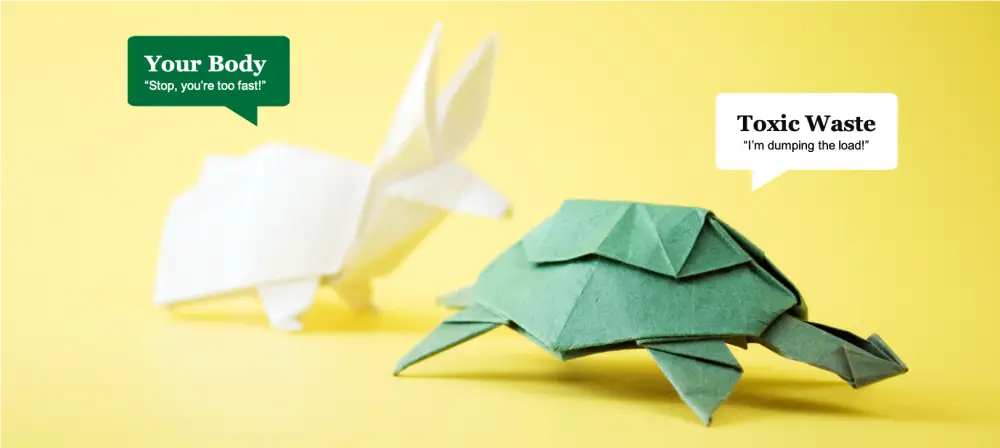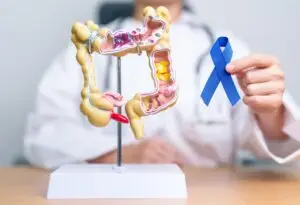Detoxing Too Fast
Just as toxins can cause problems when entering your body, they can cause similar issues on their way out. If you detox too fast, or without the right support, you may reabsorb some old bacteria, toxins, and other decomposing chemicals. Why? It’s a tortoise vs the hare situation. The tortoise, in this scenario, is the slow-moving collection of waste that’s being transported to your “excretion center”. And the hare is your fast-pace, high-performing body. But if the tortoise gets enough momentum, it can outrun the hare and your ability to eliminate waste. This is how pieces of “junk” get released back into your bloodstream to trigger inflammation and make you feel sick. In essence, you’re getting poisoned by garbage that’s trying to escape.
Symptoms of the "Healing Crisis"
Symptoms may come and go (especially during the first 7-10 days of detoxing) and often mimic the flu. Common symptoms include: fatigue, nausea, headaches, chills, bloating, digestive issues, brain fog, joint and muscle pain, and a low fever.
Taken together, this detox reaction is known as the “healing crisis”. If you feel bad, then you know it’s working — and that toxins are “on the move. However, constant pain and lingering symptoms aren’t necessarily good. It’s a sign that your detox pathways are overwhelmed, and we should slow things down.
Supporting an Unhappy Liver
1. Keep Chemicals Off Your Face
Make sure that your cosmetic and skincare products aren’t adding new toxins to your system. A study by EWG showed that women apply nearly 168 different chemicals on their skin everyday. This exposure accumulates over time and has the same effect on your body as eating foods that contain additives, trans-fats, and refined sugars / oils.
If you’re interested in switching to a natural, medical-grade skincare line that’s supported by clinical research, I’d recommend using Ageology.
2. Get Your Daily Dose of Minerals
Minerals are essential for optimizing your detox pathways. Some mineral-boosting strategies? Take a multivitamin to help restore depleted levels (especially if you drink alcohol); soak in epsom salts (for the magnesium); and drink mineral water.
3. Load Up On Fibrous Foods
Toxins leave your body in one of three ways: through stool, urine, or sweat. To keep your digestion smooth, try eating more foods that are high in fiber. These include: beans, avocados, berries, peas, squash, and flax and chia seeds. Try this Chia Seed Pudding Recipe!.
4. Keep New Toxins Off Your Plate
Remember to eat whole, organic, and nutrient-dense fruits and vegetables along with clean, grass-fed animal proteins. Otherwise, you’re absorbing toxins while simultaneously eliminating them — two steps forward and one step back.
5. Utilize Supplements For Support
6. Drink Plenty of Water
7. Sauna and Lymphatic Drainage Massage
8. Gentle Exercise
9. Get Enough Sleep
Ready to get started?






